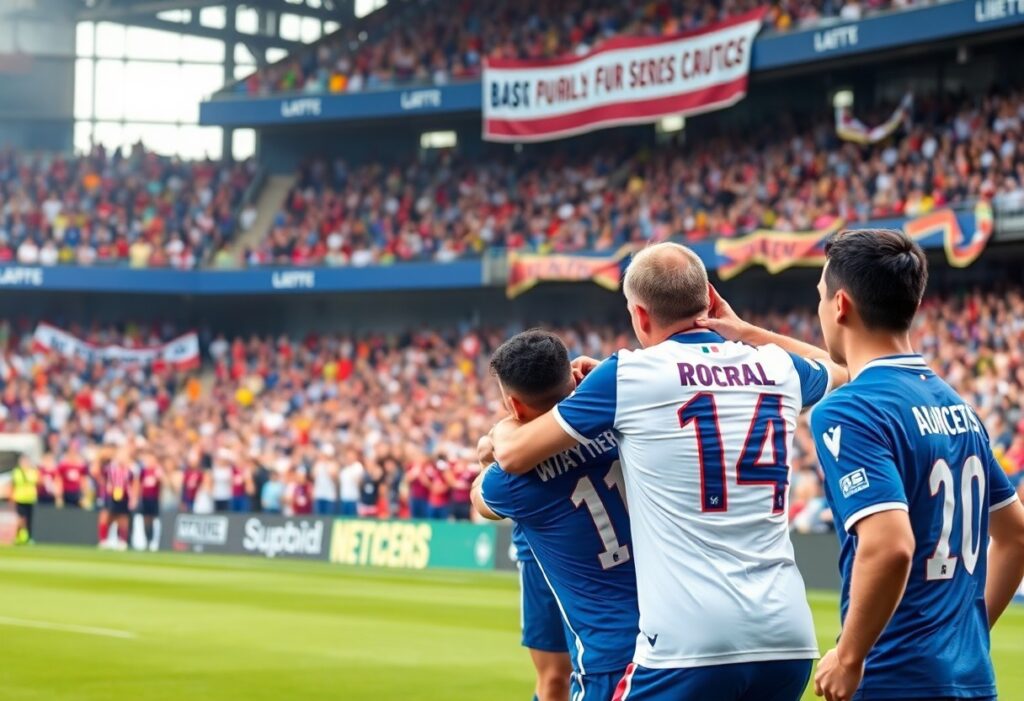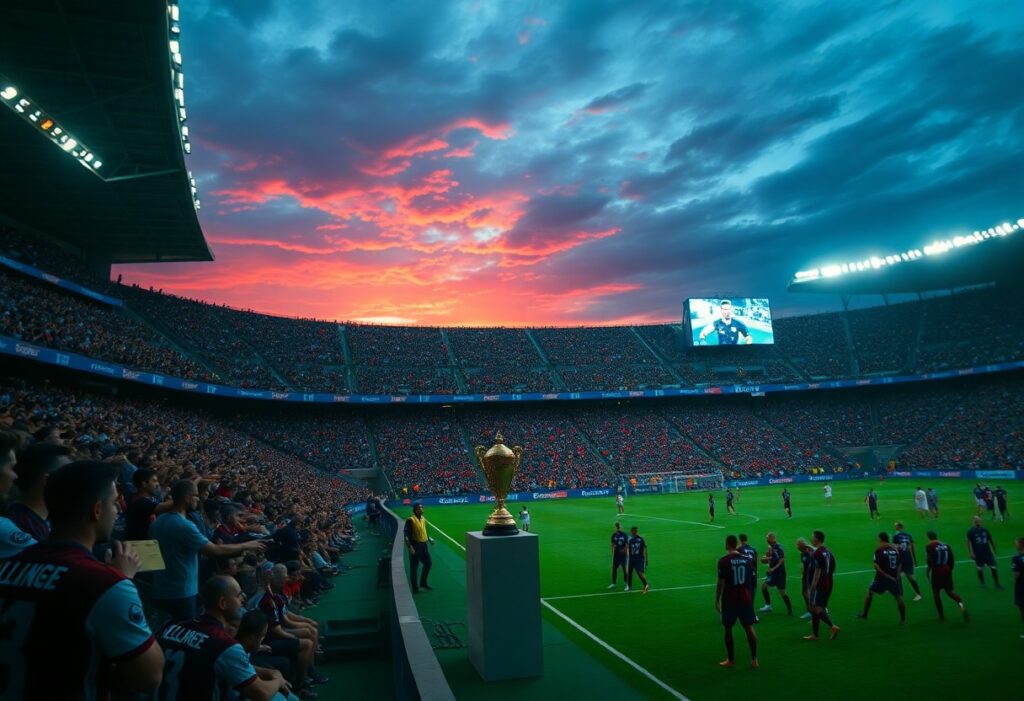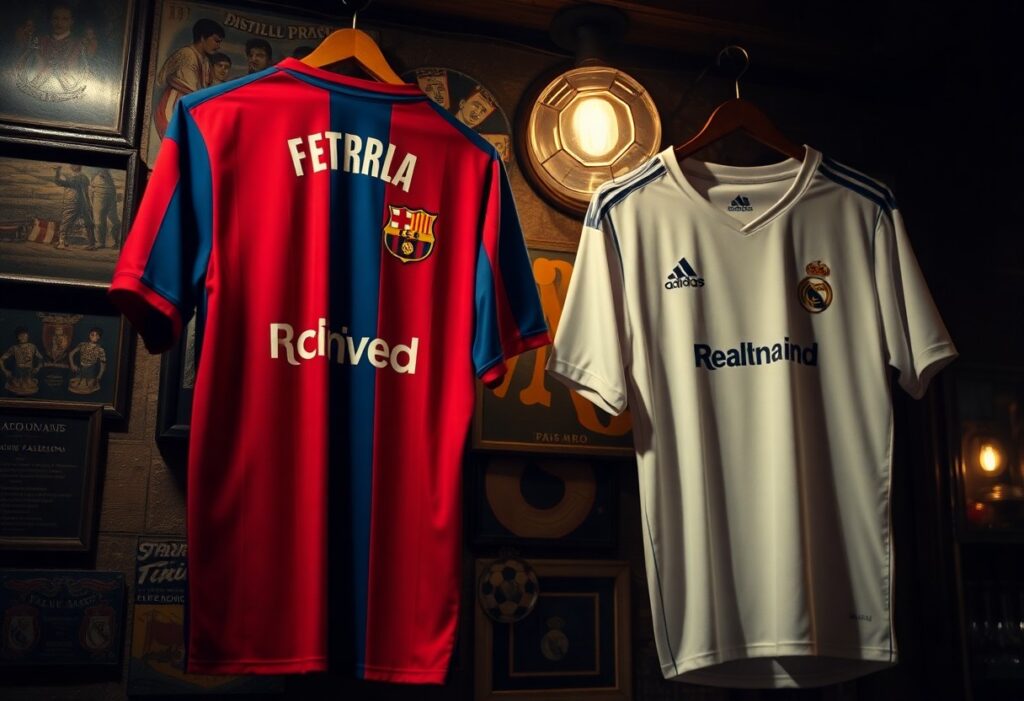
You will discover how intense rivalries have defined the Premier League, showcasing the passion and ferocity of English football. From the legendary encounters between clubs like Liverpool and Manchester United to the fierce contests of Arsenal and Tottenham, these clashes have produced unforgettable moments and shaped the history of the league. The stakes are high, with titles, pride, and local bragging rights on the line, making every match a battle for supremacy. Dive into the stories behind these fierce rivalries that continue to captivate fans around the world.
Types of Rivalries
Rivalries in football can be categorized into various types that reflect the intensity and nature of competition. These include local derbies, where geographic proximity ignites passion, historical rivalries, forged through significant events, and institutional rivalries, often triggered by contrasting club philosophies. Additionally, upstart rivalries can emerge when a previously lesser club rises to challenge established giants. Each type adds layers to the dynamics of the game, influencing player performances and fan experiences.
- Local Derbies
- Historical Rivalries
- Institutional Rivalries
- Upstart Rivalries
- Intensity
Knowing the differences among these types provides insight into how rivalries evolve and impact matches on and off the pitch.
| Type | Description |
| Local Derby | Matches between geographically close teams, typically marked by fierce competition. |
| Historical Rivalry | Rivalries rooted in significant historical events or long-standing competition. |
| Institutional Rivalry | Clashes arising from differing club philosophies and cultures. |
| Upstart Rivalry | Emergence of new competitive dynamics as a formerly lesser team excels. |
| Intensity | All rivalries share a common attribute of heightened competition and fan engagement. |
Historic Rivalries
Historic rivalries, such as the North West Derby between Liverpool and Manchester United, are steeped in history and narrative, often dating back to industrial conflicts and regional pride. Matches like these have shaped football culture, drawing significant media attention and fanfare. They not only represent a clash of footballing skills but also encapsulate the socio-economic histories of both clubs, fueling hostility and passion for generations.
Modern Rivalries
Modern rivalries have evolved with the changing landscape of the Premier League, often intensified by high-stakes matches and dramatic player transfers. Clubs like Chelsea and Manchester City now vie for supremacy, creating fierce encounters in the race for titles. This era has seen rivalries shaped by the influx of international talent and investment, leading to a heightened sense of competition. Matches are now laden with narratives that reflect changing football philosophies and tactics, ensuring that excitement continues to build.
As the Premier League progresses, modern rivalries continue to redefine the landscape of English football. The emergence of clubs like Tottenham and their competition with Arsenal has created fresh narratives, while on-the-pitch drama fueled by social media amplifies fan engagement like never before. Every season brings new players and managers, potentially altering the dynamics of these rivalries, adding layers of complexity and intrigue for supporters worldwide.
Key Factors That Fuel Rivalries
Rivalries in the Premier League are often intensified by a variety of elements, establishing deeply rooted animosities that captivate fans and players alike. Key factors include:
- Geographic proximity
- Competitive history
- Fan culture
- Media influence
- Managerial clashes
After understanding these factors, one can appreciate the complex dynamics that elevate matches beyond mere games.
Geographic Proximity
The physical closeness of clubs often ignites fierce rivalries, as seen in derbies where teams share cities or regions. This local rivalry fuels passion, with each match underscoring the desire for local bragging rights. Clubs like Manchester City and Manchester United exemplify this, where fans live in close quarters, creating an electric atmosphere both in and out of the stadium.
Competitive History
Competitive history plays a significant role in shaping rivalries, manifesting through repeated clashes over titles, cup competitions, and memorable moments on the pitch. Historic encounters, such as the intense battles between Arsenal and Manchester United in the late 1990s, set the stage for ongoing competition. These matches often result in dramatic storylines, with each game contributing to a larger narrative that fans eagerly follow. Over time, a cumulative sense of tension arises, transforming regular fixtures into significant events that capture the attention of the entire league.
The head-to-head records between teams can deepen the rivalry, with every win or loss adding weight to future encounters. For instance, the fierce competition between Liverpool and Everton is strengthened not only by their geographic proximity, but by decades of contests for both local supremacy and league titles. As teams vie for dominance, the stakes continue to rise, ensuring that their meetings are charged with emotion and rivalry that transcends individual matches.
The Role of Fans in Rivalries
Fans serve as the lifeblood of rivalries, bringing unmatched energy and passion that elevate the stakes of each encounter. Their unwavering support, manifesting in vibrant matchday atmospheres and fervent chants, creates a distinct environment that players feed off during high-pressure games. These unique dynamics often translate into fierce competition on the pitch, with each side eager to outperform the other not just for the sake of victory, but to deliver pride to their loyal followers.
Fan Culture and Identity
Fan culture is intricately linked to identity, forming a significant part of an individual’s social life and community. The shared experiences of rivalry, such as attending matches and engaging in banter with opposing fans, foster a sense of belonging and collective identity. For many, supporting their team becomes synonymous with personal pride, as the highs of victory and the lows of defeat are deeply felt within their community.
Social Media Impact
Social media has transformed the way rivalries are amplified, providing platforms for fans to express their passion instantly and broadly. The rise of Twitter, Instagram, and TikTok has enabled supporters to share content, engage in banter, and participate in online debates that can intensify rivalries beyond the stadium. Moments can go viral within minutes, reinforcing narratives and emotions attached to specific matches and players.
Social media platforms serve as a battleground where rivalries evolve, with fans not only reacting to match outcomes but also shaping discussions around players and tactics. Memes, highlights, and fan-made content can spread rapidly, impacting perceptions and sentiments among opposing fan bases. This immediate interaction brings rivalries to life outside traditional matchdays, with incidents rehashed and dissected widely. For instance, during a heated match, one viral tweet or video can quickly spiral into a trending topic, showcasing the powerful influence fans wield in modern rivalries.
Notable Matches and Clashes
Throughout the Premier League’s history, several matches have defined rivalries, showcasing the fierce competition that characterizes English football. Iconic clashes, such as the heated encounters between Manchester United and Arsenal in the late 1990s, featured a mix of skill, aggression, and last-minute drama. The infamous 2004 “Battle of Old Trafford,” where a brawl erupted on the pitch, epitomizes how these matches can spiral into chaos, leaving a lasting impact on players and fans alike.
Memorable Moments
Memorable moments during rivalry matches serve as defining highlights for fans and players. The pivotal goal by Sergio Agüero for Manchester City in the dying moments of the 2012 season secured their first league title in 44 years, illustrating the epic nature of these fixtures. Such unforgettable instances not only etch themselves into the memories of supporters but also become part of football folklore, shared stories for generations.
Impact on League Standings
Rivalry matches often have significant implications for league standings, influencing title races and relegation battles alike. The results of these high-stakes encounters can shift momentum, with teams gaining confidence or suffering damaging setbacks. A win or loss in a rivalry match frequently results in dramatic points swings that can redefine the trajectories of clubs throughout the season.
This impact on league standings cannot be overstated; for instance, when Liverpool defeated Chelsea during their 2013 campaign, it not only boosted Liverpool’s title aspirations but also substantially hindered Chelsea’s chances of securing Champions League football. Similarly, the fierce clashes between Tottenham and Arsenal typically determine not just bragging rights but also critical points that can secure or lose European competition spots, showing how these matches extend beyond mere rivalry into the realms of tactical strategy and league positioning.
Tips for Understanding Rivalries
To fully grasp the intense rivalries that define the Premier League, consider the historical context and cultural significance behind each matchup. Explore local fan bases and their unique stories, as well as the highs and lows of past seasons. Keep an eye on the underlying tensions that can escalate matches. Familiarizing yourself with key players and their rivalries can enhance your viewing experience. Stay updated with league news and graphs to visualize the performance trends leading to matchups. After focusing on these aspects, your appreciation for the game’s intensity will deepen.
Engaging with Fan Communities
Join online forums or social media groups dedicated to specific clubs to immerse yourself in the lived experience of rivalries. Engaging with passionate fans provides real-time insights, personal stories, and a distinct atmosphere that enriches understanding. These communities often host debates, share historical highlights, and offer localized perspectives that traditional media may overlook. Participating in discussions can also keep you updated on matchday events and fan-organized activities, fostering a greater connection to the rivalry.
Following Rivalry Narratives
Pay attention to the evolving narratives that characterize each season’s key clashes. These storylines often influence player performances, tactics, and media coverage. Historical matchups carry weight, with previous encounters fueling anticipation and underlying emotions. Highlighting statistics, like head-to-head records and recent form, adds depth to these narratives, creating a captivating backdrop for upcoming fixtures. Rivalries are more than mere matches; they encapsulate a journey full of drama, stakes, and unforgettable moments.
As you follow rivalry narratives, investigate deeper into players’ backgrounds and their previous encounters with opponents. For instance, longstanding feuds between star players can swing the momentum during intense matches. Media representations often amplify both the hype and the intensity, presenting a narrative arc that keeps fans engaged. Analyzing the psychological aspects of memorable encounters gives insight into how past events shape current rivalries. Ultimately, understanding the intricate web of narratives adds layers to your perspective, transforming casual fandom into a passionate commitment.
Pros and Cons of Football Rivalries
| Pros | Cons |
|---|---|
| Increases engagement and viewership | Can lead to violence and hooliganism |
| Enhances the atmosphere of matches | Creates toxic environments for fans |
| Boosts revenue through ticket sales | Can overshadow sportsmanship |
| Rivalries fuel player motivation | Intensifies pressure on players and coaches |
| Encourages local pride and community support | May promote divisive behaviors among fans |
| Stimulates media interest and coverage | Risks legal issues from fan altercations |
| Cultivates tradition and history | Can lead to biased officiating concerns |
| Fosters player rivalries that enhance skills | Multi-generational grudges can arise |
| Strengthens club identities | Can distract from important social issues |
| Promotes healthy competition in leagues | Escalates fan rivalries beyond football |
Benefits to the Sport
Football rivalries contribute significantly to the sport’s allure by generating electrifying atmospheres that captivate fans. High-stakes encounters, like the Manchester derby or the North West derby between Liverpool and Manchester United, provide unique moments that elevate the game. Such rivalries often enhance ticket sales, sponsorship deals, and media interest, ultimately driving economic growth within the sport. The intense anticipation surrounding these matches fosters a sense of community pride and loyalty, making them memorable events in the football calendar.
Negative Aspects
Despite their benefits, rivalries can bring negative consequences that tarnish the spirit of the game. Incidents of violence and hooliganism often emerge during high-tension clashes, leading to dangerous situations for fans and players alike. Furthermore, the intense scrutiny and pressure on athletes can exacerbate anxiety, impacting their performance. Such environments may also foster toxic interactions among fan bases, promoting a divisive culture that eclipses sportsmanship. These negative aspects highlight the duality of football rivalries, reminding us of the fine line between passion and aggression.
The prevalence of hooliganism is one of the most alarming effects of fierce rivalries, with incidents that have occurred across various leagues often resulting in injuries and major disturbances. For instance, historic clashes between West Ham and Millwall have become infamous for violence, with security measures frequently heightened to prevent outbreaks. This culture of aggression can intimidate families and casual fans, potentially alienating them from the sport. Moreover, intense rivalries can overshadow the essence of fair play, as rival fans sometimes direct hostility towards opposing players and referees, fueling further tension and detracting from the game’s integrity.
Summing up
Summing up, the intense rivalries that have defined the Premier League are pivotal in understanding its evolution and cultural significance. From iconic clashes between Manchester United and Liverpool to the fierce competition of Arsenal and Tottenham, these matchups have not only produced unforgettable moments but have also shaped fan loyalty and club identities. The passionate encounters serve as a testament to the league’s ability to captivate millions, illustrating how competition transcends sport to influence broader societal ties.
FAQ
Q: What are some of the most notable rivalries in Premier League history?
A: Notable rivalries include Manchester United vs. Liverpool, Arsenal vs. Tottenham, and Chelsea vs. Manchester City. Each match carries significant historical context, fan passion, and competitive intensity that shape the league’s narrative.
Q: How have these rivalries impacted the teams involved?
A: These rivalries often boost team morale and fan support, leading to improved performances during matches. Success against rivals can elevate a team’s status and influence their overall standings in the league.
Q: Why do such fierce rivalries exist in the Premier League?
A: Fierce rivalries stem from geographical proximity, historical events, and competition for major titles. The emotional investment from fans and players alike intensifies the atmosphere surrounding these matches, making them highly anticipated events.


